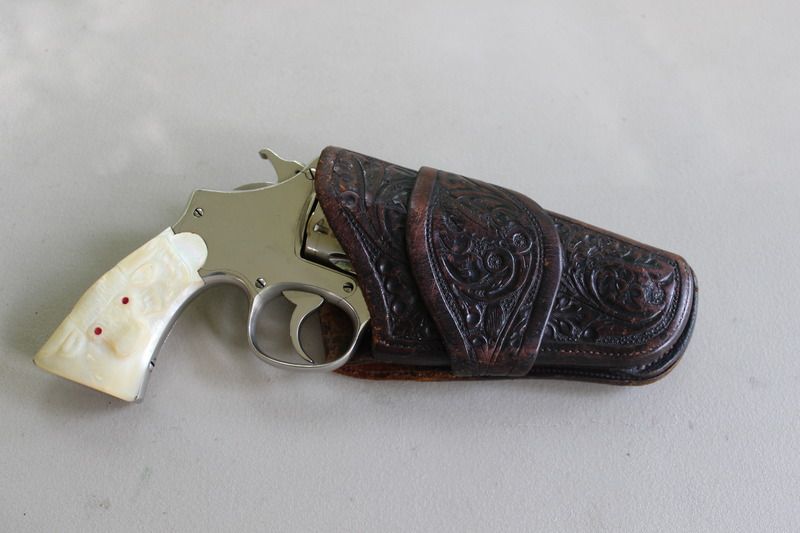Quote:
Originally Posted by crsides

Posted this not long ago. The Hank Williams Jr 3rd model 44spl in an unmarked Brill holster. Got this one from John who attributed this one to Brill and that's good enough for me. An old warrior for sure.

Charlie |
Very nice. The only other 'unmarked' Brill I'm aware of -- and of course I haven't seen them all! -- is the one that is currently mated to Butch Cassidy's SAA; and it actually IS marked but not on the cuff but on the fender as is conventional with other makers.
I've only known about Brills for a year or so, despite being in the holster industry all my adult life. I guess that's because the Brill had no known direct impact on holster technology that exploded in the 1960s. My recent research suggests that perhaps it had more than was heretofore realised.
More significantly, though, is that because there are few who have handled a Brill -- I've never handled one -- we evaluate the design on the basis of its photographs in profile, sometimes but not always accompanied by a rear view. So until now we've not understood that the Brill is the world's first "engineered" holster, even before the Berns-Martin and the Hoyt spring holsters.
It is said that a Threepersons, for example, has the feature that the holster is fitted tightly to the belt and stays in position. Myres does this, beginning in 1931 with its famous 614, with a simple blank that has a 'tongue' extending from that pocket that is folded and then stitched to the back of the holster to form a rough tunnel for the belt. But a Brill uses a structure to form a well-defined tunnel: the cuff's edges are parallel to the fold that forms the top of the tunnel, to form the bottom of the tunnel. That's not at all how the 'jockstrap' on a Myres ranger holster works; the latter simply holds the holster down on the fender. The edges of the Brill's cuff bear on the belt on two sides, creating a triangulation of friction.
Then there's the stitching at the muzzle of the holster. The rear tip of the holster pocket extends so that it can be stitched to the fender; the holster pocket now can't be pulled loose from the cuff when the pistol is drawn (made for both revolvers and autos).
And most importantly, and in my view the essence of what a threerpersons is, is something one would be unaware of unless one saw a side elevation view of the holster near the trigger guard; and wouldn't grasp the significance of unless one were a holster maker: a DA Brill has THREE thick welts at the frame in front of the revolver trigger guard -- it's a retention system that replaces the leather that heretofore in holster had run up around the trigger guard hoop.
Sessums' copy uses only a single welt, suggesting that Sessums did not understand what he was copying, or his stitching machine wouldn't handle five layers of saddle leather including lining. My state-of-the-art Bull certainly won't do it; it would have taken just the right needle-and-awl machine to handle all that thickness every single time. They certainly existed, though, and are used today by all the long-time makers. But no one volunteers to risk sewing all their welts in the manner of a Brill.
Some pics, showing a Brill with three welts, a Sessums with one welt for an auto (typical of a Myres 614, too), and the Brill (it's marked with Brill's familiar stamp) that reputedly belonged to Butch although we can't make the dates work if Butch really died in 1908 :-)
s-l1600 (6).jpg
brill auto (7).jpg
44151x1.jpg